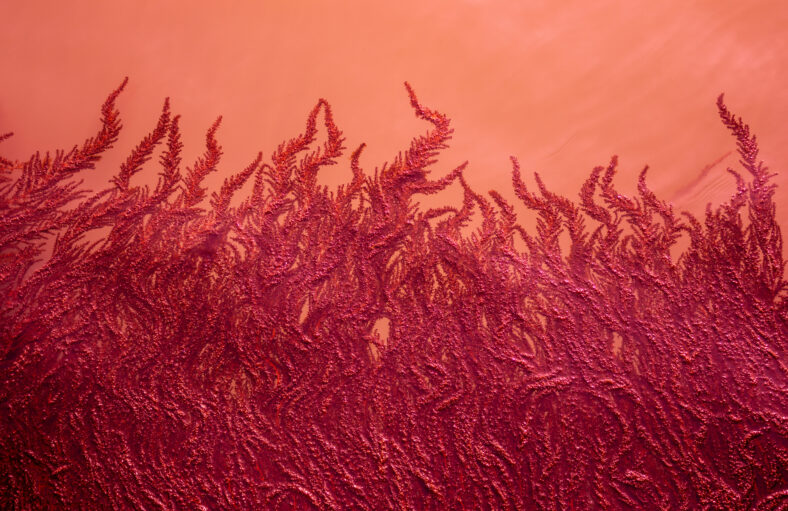Chameleon Shrimp Are Able To Change Their Color To Camouflage Themselves Even In Exotic Algae

Chameleon shrimp can change their color to camouflage themselves among the algae they inhabit, helping them to escape from predators.
Their appearance shifts from red, brown, green, or even transparent, depending on the type of algae they live in.
A new study shows how these shrimp interact with invasive algae. The findings also reveal that they can blend into algae from other oceans that they did not evolve with.
Researchers from the University of Exeter in the United Kingdom and the Federal University of ABC in the state of São Paolo, Brazil, tested how the chameleon shrimp (Hippolyte varians), found on European beaches, interacted with two exotic algae from Asia and Australia.
The European species is about three centimeters long and is related to the carnival shrimp (Hippolyte obliquimanus), which is common along São Paolo’s north coast.
“When the chameleon shrimp encounters two different algae, it doesn’t matter which is native and which is exotic, it chooses the one that offers the best color match so it can hide,” said Rafael Duarte, the first author of the study.
The research team collected the shrimp and algae from tide pools on rocks at two beaches in Falmouth, southwest Britain.
Back at the laboratory, the shrimp were placed in a box with two algae to hide in—one native (red or green) and one exotic (brown or pink).
“The brown one is an Asian sargassum species that has increased its presence in the last decade and is causing problems in several places in Europe. It’s taking over the habitat of native species, which are being restricted to deeper areas. However, it has proven to be an excellent shelter for shrimp,” Duarte said.

Sign up for Chip Chick’s newsletter and get stories like this delivered to your inbox.
The shrimp were observed for 10 minutes in the boxes. In most cases, they chose one of the two algae and stayed there for the duration of the experiment.
Overall, the shrimp did not favor the native algae but instead preferred the algae that provided the best camouflage.
The green shrimp showed no particular preference between the green native algae and the brown exotic sargassum.
But when they were made to choose between the native red algae and the exotic brown algae, they preferred the sargassum.
Since there was no color match, it appeared that the shrimp gravitated toward the sargassum because its structure served as better protection.
The sargassum has a more complex, three-dimensional structure that can conceal the shrimp from predators, even though the colors don’t quite match.
Furthermore, the native green algae are seasonal, so when they are not available, the shrimp will use sargassum, which is available all year.
It takes up to 30 days for chameleon shrimp to change color. The shift from red to green is faster than the other way around.
It is unclear how the shrimp are able to recognize the algae. The researchers are now investigating whether the crustaceans can detect chemical signals from the algae.
The study was published in the Journal of Animal Ecology.
More About:Animals





